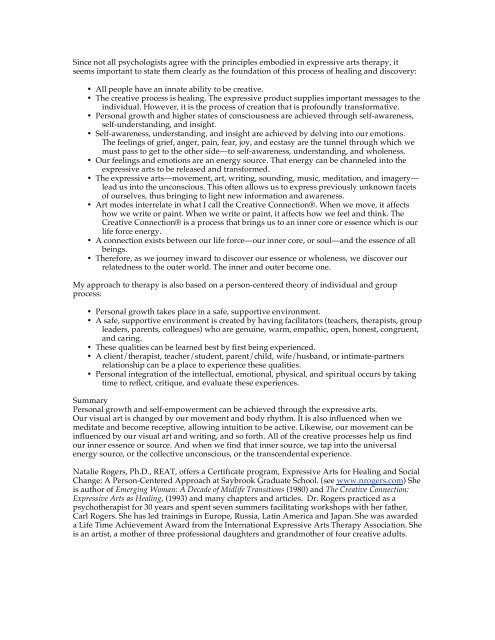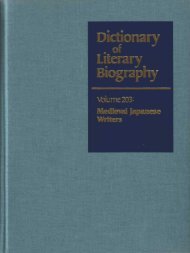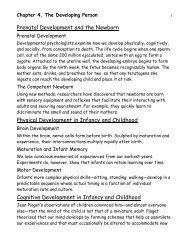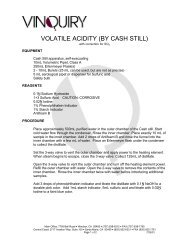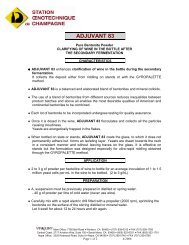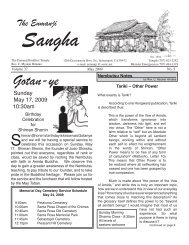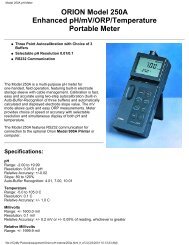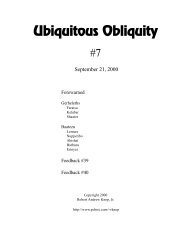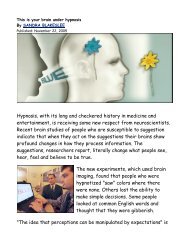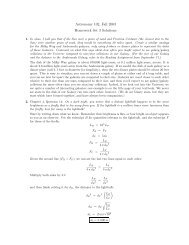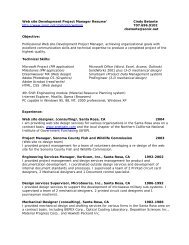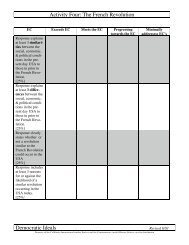Person-centered expressive arts therapy by natalie rogers - Sonic.net
Person-centered expressive arts therapy by natalie rogers - Sonic.net
Person-centered expressive arts therapy by natalie rogers - Sonic.net
You also want an ePaper? Increase the reach of your titles
YUMPU automatically turns print PDFs into web optimized ePapers that Google loves.
Since not all psychologists agree with the principles embodied in <strong>expressive</strong> <strong>arts</strong> <strong>therapy</strong>, it<br />
seems important to state them clearly as the foundation of this process of healing and discovery:<br />
• All people have an innate ability to be creative.<br />
• The creative process is healing. The <strong>expressive</strong> product supplies important messages to the<br />
individual. However, it is the process of creation that is profoundly transformative.<br />
• <strong>Person</strong>al growth and higher states of consciousness are achieved through self-awareness,<br />
self-understanding, and insight.<br />
• Self-awareness, understanding, and insight are achieved <strong>by</strong> delving into our emotions.<br />
The feelings of grief, anger, pain, fear, joy, and ecstasy are the tunnel through which we<br />
must pass to get to the other side—to self-awareness, understanding, and wholeness.<br />
• Our feelings and emotions are an energy source. That energy can be channeled into the<br />
<strong>expressive</strong> <strong>arts</strong> to be released and transformed.<br />
• The <strong>expressive</strong> <strong>arts</strong>—movement, art, writing, sounding, music, meditation, and imagery—<br />
lead us into the unconscious. This often allows us to express previously unknown facets<br />
of ourselves, thus bringing to light new information and awareness.<br />
• Art modes interrelate in what I call the Creative Connection®. When we move, it affects<br />
how we write or paint. When we write or paint, it affects how we feel and think. The<br />
Creative Connection® is a process that brings us to an inner core or essence which is our<br />
life force energy.<br />
• A connection exists between our life force—our inner core, or soul—and the essence of all<br />
beings.<br />
• Therefore, as we journey inward to discover our essence or wholeness, we discover our<br />
relatedness to the outer world. The inner and outer become one.<br />
My approach to <strong>therapy</strong> is also based on a person-<strong>centered</strong> theory of individual and group<br />
process:<br />
• <strong>Person</strong>al growth takes place in a safe, supportive environment.<br />
• A safe, supportive environment is created <strong>by</strong> having facilitators (teachers, therapists, group<br />
leaders, parents, colleagues) who are genuine, warm, empathic, open, honest, congruent,<br />
and caring.<br />
• These qualities can be learned best <strong>by</strong> first being experienced.<br />
• A client/therapist, teacher/student, parent/child, wife/husband, or intimate-partners<br />
relationship can be a place to experience these qualities.<br />
• <strong>Person</strong>al integration of the intellectual, emotional, physical, and spiritual occurs <strong>by</strong> taking<br />
time to reflect, critique, and evaluate these experiences.<br />
Summary<br />
<strong>Person</strong>al growth and self-empowerment can be achieved through the <strong>expressive</strong> <strong>arts</strong>.<br />
Our visual art is changed <strong>by</strong> our movement and body rhythm. It is also influenced when we<br />
meditate and become receptive, allowing intuition to be active. Likewise, our movement can be<br />
influenced <strong>by</strong> our visual art and writing, and so forth. All of the creative processes help us find<br />
our inner essence or source. And when we find that inner source, we tap into the universal<br />
energy source, or the collective unconscious, or the transcendental experience.<br />
Natalie Rogers, Ph.D., REAT, offers a Certificate program, Expressive Arts for Healing and Social<br />
Change: A <strong>Person</strong>-Centered Approach at Saybrook Graduate School. (see www.n<strong>rogers</strong>.com) She<br />
is author of Emerging Woman: A Decade of Midlife Transitions (1980) and The Creative Connection:<br />
Expressive Arts as Healing, (1993) and many chapters and articles. Dr. Rogers practiced as a<br />
psychotherapist for 30 years and spent seven summers facilitating workshops with her father,<br />
Carl Rogers. She has led trainings in Europe, Russia, Latin America and Japan. She was awarded<br />
a Life Time Achievement Award from the International Expressive Arts Therapy Association. She<br />
is an artist, a mother of three professional daughters and grandmother of four creative adults.


